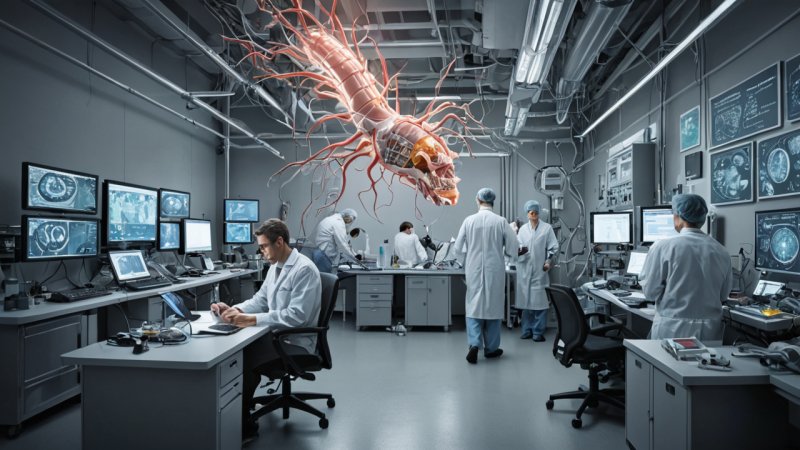The field of biomedical engineering has witnessed remarkable advancements over the past few decades, merging the principles of engineering with the complexities of medicine to improve healthcare outcomes. These innovations not only enhance diagnostic and treatment capabilities but also pave the way for personalized medicine and improved patient experiences. From revolutionary imaging technologies to cutting-edge tissue engineering, the contributions from biomedical engineering are transforming how we approach medical challenges. In this article, we will delve into some of the top innovations that are shaping the future of healthcare and explore their implications for patients and medical professionals alike.
1. Advanced Imaging Techniques
One of the most significant breakthroughs in biomedical engineering is the development of advanced imaging techniques. Traditional imaging methods like X-rays and CT scans have evolved into sophisticated modalities such as Magnetic Resonance Imaging (MRI) and Positron Emission Tomography (PET). These technologies provide detailed images of the body’s internal structures, enabling early detection and accurate diagnosis of diseases. For instance, functional MRI (fMRI) allows scientists to observe brain activity in real-time, significantly advancing our understanding of neurological disorders.
2. Wearable Health Technology
Wearable health devices have revolutionized how individuals monitor their health. From fitness trackers that measure heart rate and physical activity to advanced devices that monitor glucose levels in diabetic patients, these technologies empower users to take charge of their health. Innovations in materials science have led to the creation of flexible sensors that can be integrated into clothing or worn as patches, providing real-time data and alerts for potential health issues. As these devices become more sophisticated, they promise to play an essential role in preventative medicine and chronic disease management.
3. 3D Printing in Medicine
3D printing, or additive manufacturing, is another groundbreaking innovation in biomedical engineering. This technology allows for the creation of complex biological structures that were previously unimaginable. Researchers have successfully printed organs, tissues, and even prosthetics tailored to individual patients. A notable advancement is the creation of bioprinted tissues that can be used for drug testing, reducing the need for animal testing and speeding up the development of new therapies. As the technology matures, the possibility of printing fully functional organs for transplantation may become a reality.
4. Regenerative Medicine
Regenerative medicine focuses on repairing or replacing damaged tissues and organs using techniques like stem cell therapy and tissue engineering. Recent advancements in this field have led to the development of novel therapies for conditions such as heart disease, spinal cord injuries, and degenerative diseases. For instance, researchers are exploring the use of stem cells to regenerate heart tissue in patients who have suffered heart attacks. The promise of regenerative medicine lies in its potential to not just treat symptoms but to restore full function and improve quality of life for patients.
5. Robotic Surgery
Robotic-assisted surgery has gained traction in recent years, offering surgeons enhanced precision and control during complex procedures. With the aid of robotic systems, surgeons can perform minimally invasive surgeries, resulting in smaller incisions, reduced blood loss, and faster recovery times for patients. The da Vinci Surgical System is one of the most recognized examples, allowing for intricate surgeries in urology, gynecology, and general surgery. The continuous evolution of robotic technology promises to improve surgical outcomes and expand the possibilities of minimally invasive procedures.
6. Telemedicine and Remote Health Monitoring
The rise of telemedicine has been accelerated by advancements in communication technology and the need for accessible healthcare solutions. Patients can now consult with healthcare professionals remotely, reducing the need for in-person visits. This approach not only enhances convenience but also increases access to care for individuals in remote areas. Remote health monitoring tools enable continuous tracking of patient health metrics, allowing for timely interventions and personalized care plans. The integration of telemedicine into routine healthcare delivery represents a shift towards more patient-centered care.
7. Artificial Intelligence in Healthcare
Artificial intelligence (AI) is rapidly becoming an indispensable tool in biomedical engineering. From predictive analytics to assistive robots in surgery, AI applications are transforming how healthcare is delivered. Machine learning algorithms can analyze vast amounts of medical data to identify patterns, predict patient outcomes, and even assist in diagnostic processes. For example, AI systems are being used to analyze medical images, providing support to radiologists by highlighting areas of concern. The potential of AI to enhance decision-making and improve patient care is immense.
Conclusion
The innovations in biomedical engineering are not only advancing medical science but are also reshaping the landscape of healthcare. With each breakthrough, we move closer to a future where personalized medicine, improved diagnostic capabilities, and enhanced treatment options become the norm rather than the exception. As we continue to explore the intersection of technology and medicine, the potential for further innovations remains vast, promising to enhance the quality of life for patients around the world. The advancements in biomedical engineering remind us of the incredible possibilities that lie ahead in the quest for better health and well-being.






